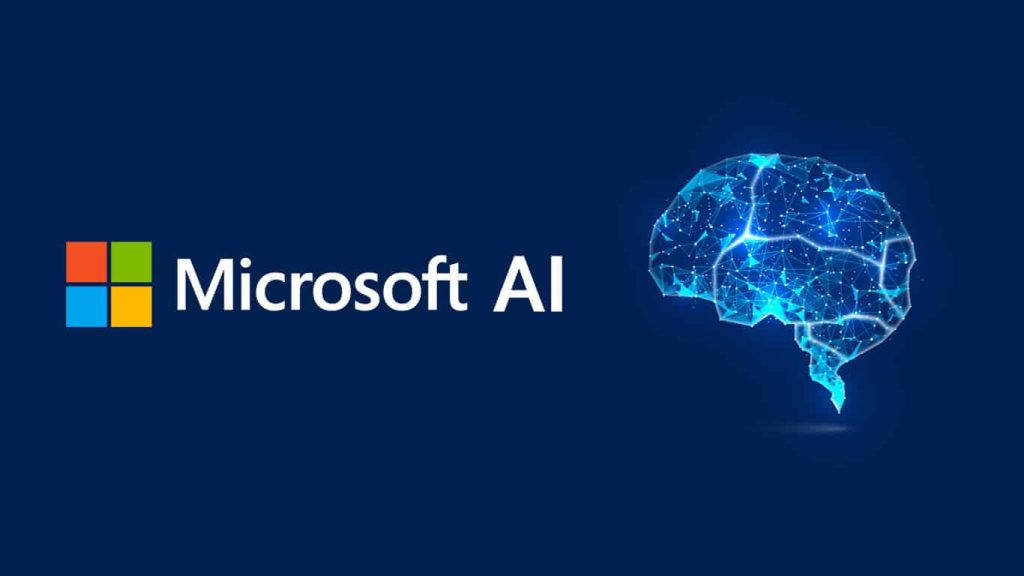Microsoft AI Model is the latest buzzword in the tech community, and for good reason. Microsoft is reportedly training an in-house AI model that will be equipped with a staggering 500 billion parameters, positioning it to directly rival top models from industry giants like Google, Anthropic, and OpenAI.
Microsoft AI Model: The New Frontier in Artificial Intelligence
What Sets the Microsoft AI Model Apart?
The tech sphere is abuzz with talks of Microsoft’s latest venture into artificial intelligence – an endeavor that could redefine the capabilities of AI systems. This Microsoft AI Model, dubbed MAI-1, isn’t just another addition to the growing list of large language models; it represents a significant leap forward. With half a trillion parameters at its core, MAI-1 has been designed to understand and generate natural language with unprecedented sophistication. It’s not just about size; this model embodies Microsoft’s commitment to pushing the boundaries of what artificial intelligence can achieve.
In comparison to existing models by other tech behemoths, MAI-1 stands out not only due to its sheer scale but also because it reflects Microsoft’s strategic move towards greater autonomy within the realm of AI development. By focusing on developing their own proprietary technologies, they’re setting the stage for innovations that could potentially introduce new functionalities and applications previously unattainable by current standards.
The intricacies behind MAI-1 might seem complex at first glance – and they are – but what matters most is how these technicalities translate into real-world performance and capabilities that can benefit society at large. From enhancing conversational interfaces to providing more accurate predictive analytics, the implications are vast.
The Impact of 500B Parameters on AI Capabilities
Gone are the days when artificial intelligence was limited by rudimentary algorithms and simplistic data processing methods. Today’s cutting-edge models like Microsoft’s upcoming behemoth are capable of learning from vast datasets at an accelerated pace. But why does having 500 billion parameters make such a difference? Think of each parameter as a building block in understanding human language nuances – more blocks mean more detailed structures can be built.
This massive number of parameters allows for a deeper level of learning and comprehension. It means that this Microsoft AI Model could offer nuanced understanding comparable to human-like cognition when interacting with text-based data. Such capacity enhances everything from seamless conversation bots to sophisticated analysis tools capable of interpreting complex documents with ease.
We’re looking at an evolution where machines can provide more personalized experiences, interpret emotions through text better than ever before, and unlock insights from data that were previously obscured by technological limitations.
Challenging the Titans: Microsoft vs. Google and OpenAI
A Comparative Look at AI Heavyweights
In recent years, Google’s prowess with its series of models like BERT and GPT-3 from OpenAI have set high standards in the field of artificial intelligence. However, this new Microsoft AI Model, boasting 500 billion parameters, signifies an escalating competition among these titans of technology.
Much attention has been given to OpenAI due to its groundbreaking work with GPT-4 – but now it appears that even amidst ongoing collaborations between Microsoft and OpenAI, there’s room for healthy rivalry as well. While details remain scarce on how exactly MAI-1 will stack up against GPT-4 or Google’s counterparts in terms of functionality or accuracy, one thing is clear: competition drives innovation.
This competitive spirit doesn’t just push companies like Microsoft to create more advanced technologies; it also accelerates overall progress within the industry – leading to better tools for developers and richer experiences for end-users across various sectors.
How Microsoft’s Entry Shifts the Competitive Landscape
The entry of MAI-1 into this arena isn’t merely about challenging existing players; it signals a shift in how companies approach their relationships within this space—relationships which have been described as “increasingly complicated.” As partnerships evolve into intricate affiliations reminiscent of polyamorous arrangements rather than straightforward alliances or rivalries – we witness a dynamic ecosystem where collaboration coexists with competition.
Satya Nadella’s decision to invest heavily into internal development while maintaining ties with OpenAI speaks volumes about his confidence not only in his team’s abilities but also in fostering an environment where innovation thrives through both independent efforts and shared ventures alike.
The Future with Microsoft’s AI Innovations
Potential Applications for the 500B Parameter Microsoft AI Model
The potential applications for such an advanced tool span across multiple industries – from healthcare where precise diagnostic assistance could save lives—to finance where intricate market patterns could be unraveled faster than ever before. In education too, personalized learning experiences could become far more effective thanks to adaptive algorithms capable of responding dynamically based on individual student needs.
Implications for Machine Learning and Beyond
Beyond immediate applications lies a broader implication for machine learning as a field—the advents made possible through these developments may pave way towards achieving true artificial general intelligence (AGI). AGI has long been considered science fiction territory but strides like those being taken by teams behind projects such as MAI-1 bring us closer than ever.

